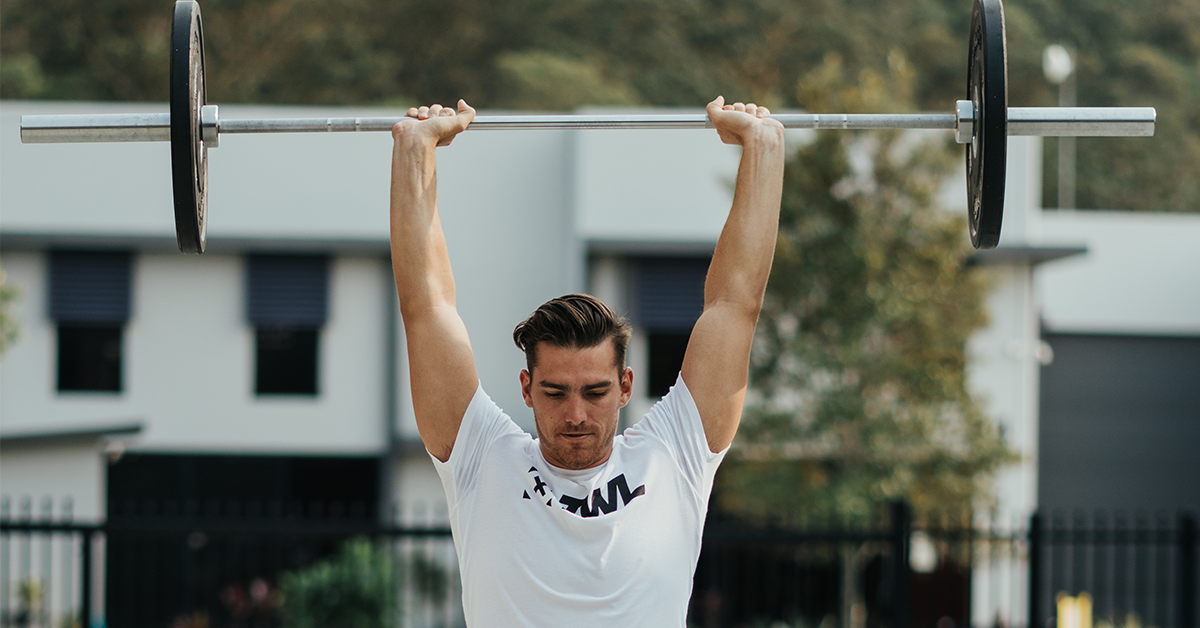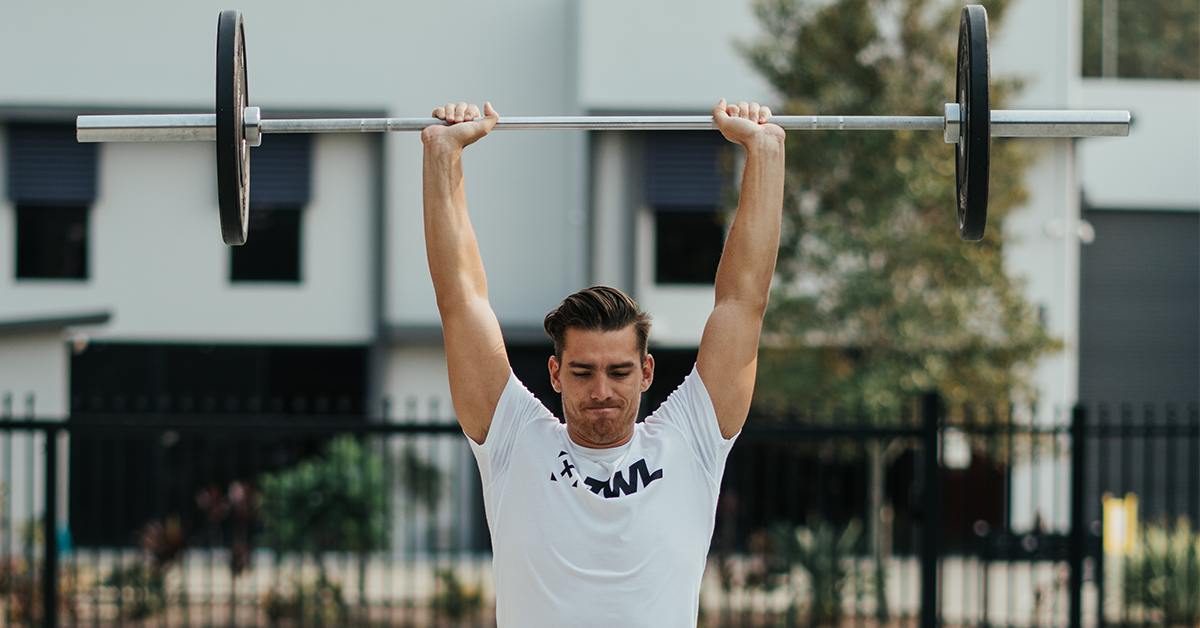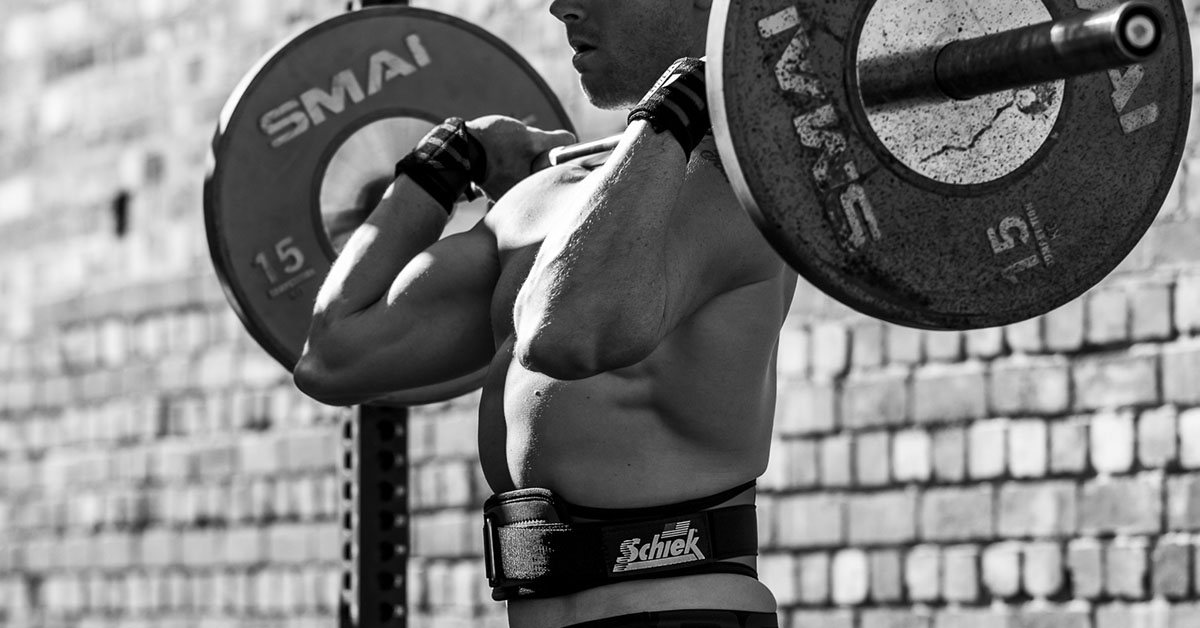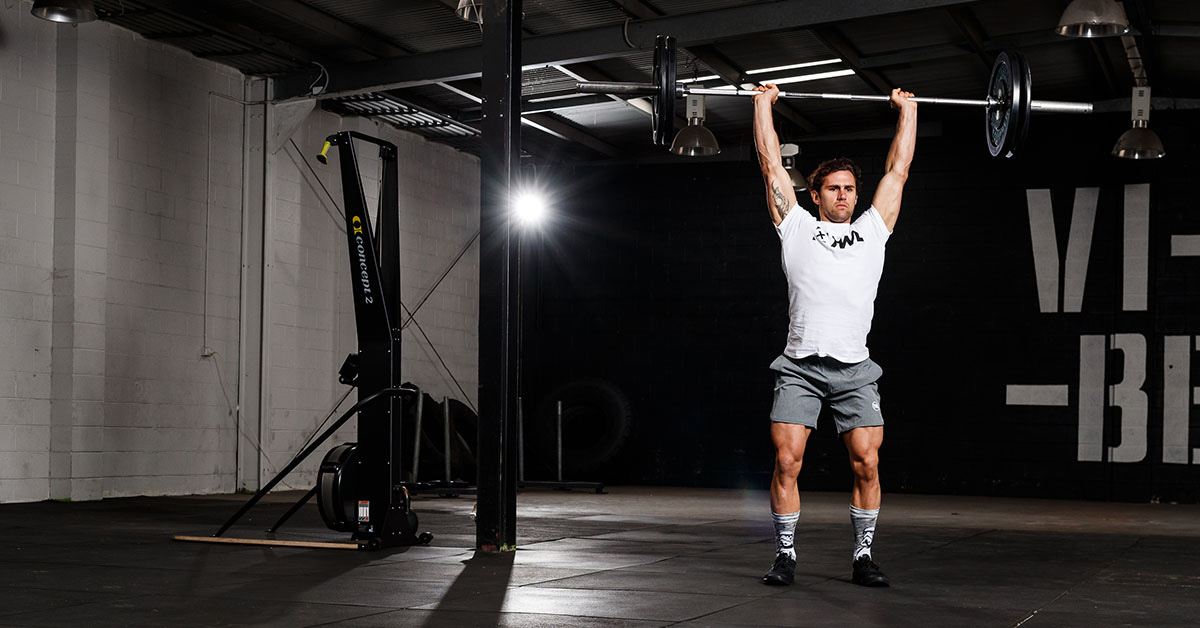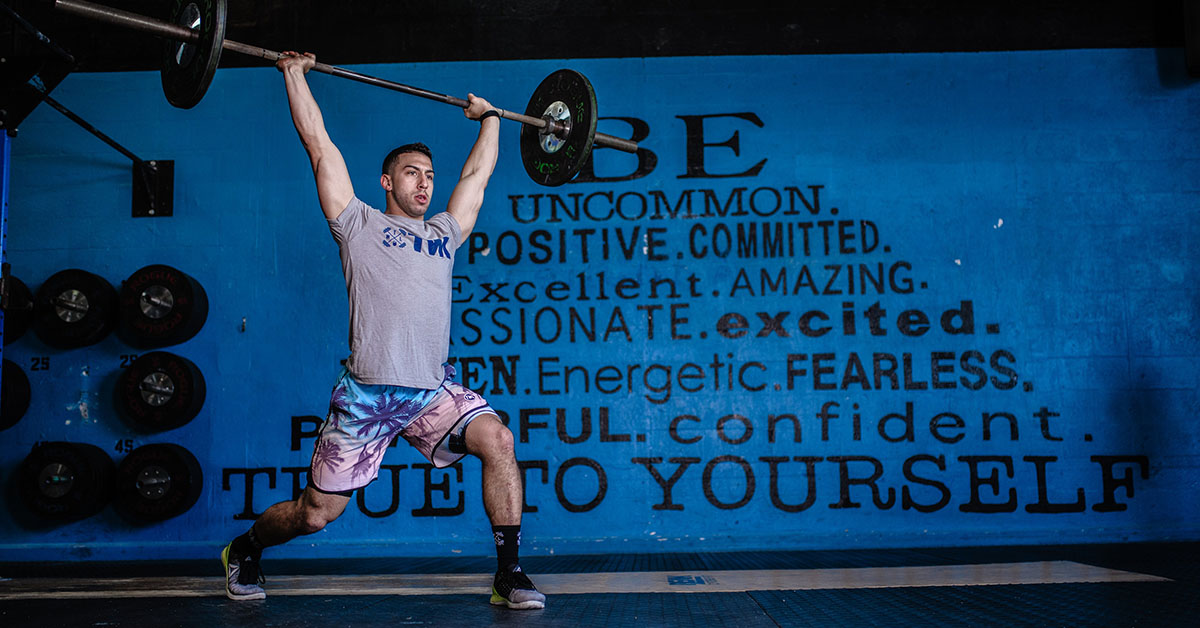If you want to get a barbell from your shoulders to the overhead position, you have a few options: the strict press, push press, push jerk, and split jerk. How do you know which one to pick? What are the differences and similarities? Let’s discuss each, how to do them, and how they compare to one another.
The Strict Press
Also called the shoulder press, the strict press is perhaps the simplest way to go from the shoulders to overhead. Your lower body remains fully extended throughout the entire movement, meaning the only thing moving is your shoulders and arms.
How to Do a Strict Press
- With the barbell on your shoulders (or taking it out of the rack), grip it slightly wider than shoulder-width apart.
- Brace and engage your core.
- Press the bar upward and lock your elbows out at the top. Your biceps should be next to your ears.
- Carefully return the bar to its starting position.
Benefits
The simplest press of all, the strict press doesn’t require as much technique as its counterparts.
Drawbacks
Because your lower body isn’t generating any power, you’re going to be more limited with how much weight you can lift (and/or how many reps you can do), compared with the other presses, which all use your lower body. The strict press is going to fatigue you faster.
Psst! If your wrists are really feeling this, use wrist wraps.
Shop Now
The Push Press
The push press introduces one slight bending of the knees, helping you drive extra power and force through the barbell to get it overhead.
How to Do a Push Press
- Set up as you would for a strict press.
- Initiate the movement by dropping into a slight squat. It might help to think of it more as a “dip.”
- Forcefully extend your legs to drive the barbell up. We call this the “drive.” (So, you dip and drive.)
- Guide the barbell and finish the movement with your arms and shoulders.
- At the top of the rep, you should be at full extension.
Benefits
Compared to the strict press, the push press allows you to lift more weight since your quads and glutes come into play.
Drawbacks
You’ll be able to go harder, but you can expect more of a total-body burn (if you consider this a drawback!).
The Push Jerk
The push jerk is similar to the push press with one key difference. Whereas with the push press, you only bend your knees in the beginning, with the push jerk, you additionally end with bended knees.
How to Do a Push Jerk
- Set up like a push press and initiate the lift with the dip and drive.
- When the barbell has reached its peak, move under it by bending your knees slightly.
- Once you’re under the barbell, lock out your arms and stand up.
- Finish the lift at full extension.
Benefits
Because this press includes a rebend (meaning the second bending of the knees), it demands less overhead strength. In other words, you can lift more weight, because it utilizes your lower half even more than a push press.
Drawbacks
Timing the rebend is challenging for some athletes. You can also expect a greater burn in your quads.
The Split Jerk
The split jerk is in a league of its own, ending with a forward-backward division of the feet. Some people don’t consider it an actual press. However, since it’s a shoulder-to-overhead movement, we’re going to include it in our guide.
How to Do a Split Jerk
Note: This will be a condensed overview of the lift. For more comprehensive instructions, see our beginner’s Olympic weightlifting guide to the split jerk.
- Set up like a push jerk and initiate with the dip and drive.
- When you would normally rebend for a push jerk, split your feet. One should move forward and the other should move backward.
- Recover by bringing the front foot back and the back foot front. (Be sure to do it in this order!)
- Finish at full extension.
Benefits
Out of the four presses, this one allows you to move the biggest weight. This is why when we see Olympic weightlifters or CrossFitters maxing out their overhead lift, they usually opt for a split jerk.
Drawbacks
Without a doubt, this is the most technical of the four movements. Precision and balance are key. Also, this movement takes longer. If you’re in the middle of a WOD and time is of the essence, the other three presses are going to save you valuable seconds.
So, Which One Should You Be Using?
The answer? It depends.
- If you’re dealing with heavier weights or higher reps, don’t rely on the strict press. It hinges too much on brute strength, and you’re going to run out of gas and hit failure faster.
- Conversely, is the goal of your programming to build raw strength? Focus on the strict press.
- If the weight is light to moderate and you need to be moving quickly (like in an AMRAP), avoid the split jerk. It takes too long, and you don’t really need it for more conservative weights.
- If you’re maxing out to see how much weight you can move, opt for the split jerk.
Here’s another important question a lot of athletes ask: Is one better than the other?
No, because they offer unique benefits and can serve different purposes! Really, it’s going to come down to (1) what type of workout/drill you’re doing and (2) what your goal is.
Final Tips
Now that you know how to do a strict press, push press, push jerk, and split jerk, we’d like to leave you with a few final pieces of advice.
- The dip-and-drive is crucial. The dip should be slow and controlled. The drive should be fast.
- Remember that the dip is not a squat.
- Keep your spine neutral. When the barbell is overhead, your body should be stacked: your hips, spine, neck/head, shoulders, and arms.
- This means that your head, ribs, and butt should not be sticking out — a common mistake athletes make. Keeping a neutral alignment (a) helps protect your spine and (b) better supports the weight of the barbell overhead.
- For heavier weights, you might find it helpful to wear a weightlifting belt. This will provide extra support and stability around your lower spine/core.

